This site is part of an affiliate sales network and receives compensation for sending traffic to partner sites, such as CreditCards.com. This compensation may impact how and where links appear on this site. This site does not include all financial companies or all available financial offers.
We have been to Tulum a few times the last two years due to the short flight to Cancun from New York and the general number of deals. Easy getaway.
Tulum is always a good time and never fails with a good meal. Yvonne, of Hello Wander World, who previously wrote about New Orleans, the Amalfi Coast, Barcelona, Rome, Culebra Island, Puerto Rico, Iceland, Costa Rica and Bangkok, recently went to Tulum and here are her practical travel tips.
If you would like to write about your recent travel experiences on The Flight Deal, submit your pitch here.
==
If you follow travel Instagrammers, you’ve most definitely heard of Tulum, Mexico. If you haven’t, it’s a hippie chic hot spot with beautiful beaches, delicious food (including lots of vegan options), and a less commercialized view of the Yucatan Peninsula.
To get to Tulum, you’ll need to fly into Cancun (CUN), which is about 2.5 hours North. When you arrive, you’ll be required to fill out both a customs and immigration form. Keep this immigration form, as you’ll need it when you leave the country.
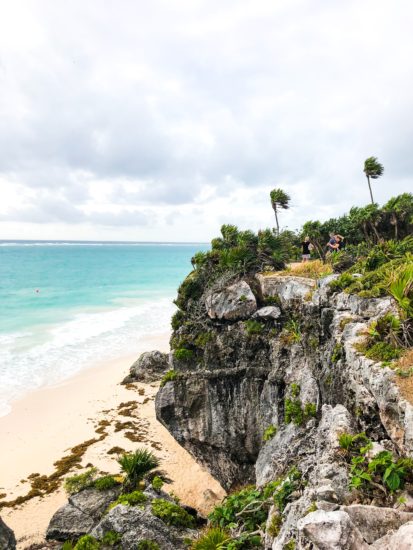
A view of the beautiful cliffsides off the Tulum Ruins – Photo: (c) 2018 – Yvonne of Hello Wander World
How to Get to Tulum
You have a couple of options to get to Tulum from Cancun Airport. The best way (I believe) is to ride the ADO bus – an air-conditioned charter bus with comfy seats and a bathroom taking only 2 – 3 stops on the way down. It’s definitely the most economical at only 242 pesos ($13 USD one way) and runs about every hour during the day. You can buy a ticket straight to Tulum and just enjoy the ride – no transfers. There is an online purchase option, but the times haven’t always been up to date, so your best bet is to find the ADO bus kiosk in the bus terminal area and buy your ticket there – even in high season, we were able to snag a seat really easily.
There are also private shuttle options. If you have a group of 6 – 8, this option could work out the best, as you’d have a private shuttle to yourself and be able to split the price more ways (~$90 USD one way/$150 USD round trip for the whole shuttle). There are many companies that offer this service, so give it a Google search and read reviews.
If you’re looking for more freedom to explore, you can rent a car. Be aware that the prices listed online may not include Mexican insurance. The insurance is necessary (they won’t rent you a car without it), even if you have car insurance at home, and can dramatically increase the price you book online (I’m talking $3/day USD to $70/day USD). Make sure to read the fine print.
Where to Stay
There are two concentrated areas of Tulum: the town center and the beach area. The beach area consists of unique boho beach resorts, posh beach clubs, and 5-star restaurants all situated on the white (kind of pink) sand beaches. You should stay on the beach if you want to spend most of your time lounging/partying on the beach with easy access to impressive culinary experiences. If you’re not able to splurge for the one of a kind luxury housing, there are also glamping/camping/RV options right on the beach. Even if you don’t stay in the hotel of a beach club, you can pay for day access – they usually require you to purchase $500 pesos or so of food and drink and a chair to lounge in.
The town center offers a local stay with lots of Airbnbs and hostel choices. It’s less tourist developed than the beachside, but it is also much more affordable and closer to other sites of interest such as Coba and cenotes. I stayed in the town center during my visit and felt the cheaper price tag (both lodging and food options) was worth the tradeoff of being further from the beach.
A third option is staying outside of the populated areas and getting connected with nature, off the grid. With Tulum being an outdoorsy, eco-friendly destination, there are many different getaways, like jungle glamping. Check out options like these on Airbnb.
No matter where you choose to stay, you’ll be connecting with beautiful nature, generous people, and a unique boho culture.
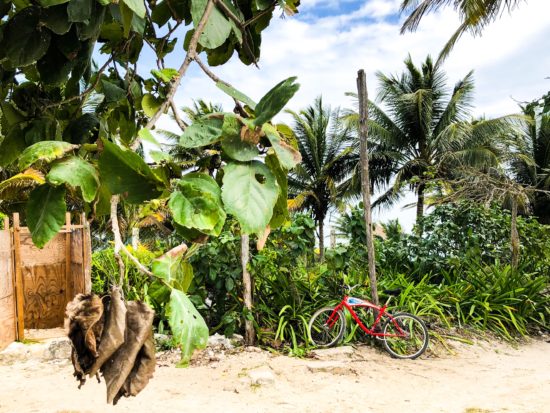
Biking is a popular way of getting around from beaches to cenotes – Photo: (c) 2018 – Yvonne of Hello Wander World
How to Get Around
Tulum isn’t that big of a town and there are ample ways to get around. Biking is a very popular and eco way of getting around. If you’re staying in the town center, it’s about a 20 minute ride to the beaches and 35 minute ride to the Tulum Ruins. There are wide sidewalks and roads made for bike sharing. There are rental companies scattered throughout the town and some Airbnbs come with bikes you can use (like the one we stayed at!).
There’s also an option of renting a car once you get to Tulum. This option is especially useful if you decide not to stay in the populated part of town or are interested in visiting the ruins or cenotes that are further from town. Parking is fairly easy to find, but is mostly street parking. When driving, it’s important to know and follow the laws – you don’t want to give the police a reason to pull you over. One more driving aspect to master, is how to handle the topes, also known as, speed bumps. Topes in the Yucatan area are very steep and need to be approached with serious caution – it’s more of a barrier than just a speed bump.
Taxis are also abundant, but are a good bit more expensive and can add up. A cheaper alternative are colectivos. They are hourly serviced shuttle vans (servicing until about 8pm each day) that go between the town center and the beach area (about $20/person) and even to other towns like Playa Del Carmen. It would be a good idea to ask your hotel or host what the schedule/closest stop is. The locals mainly use the colectivos to get to work, so they’re nothing fancy, but they get you places.
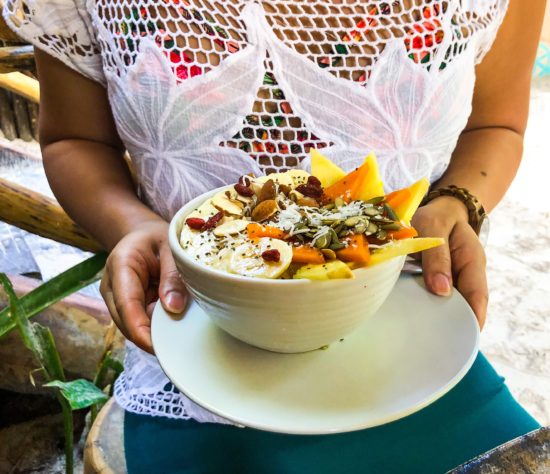
A vegan smoothie bowl from Raw Love (in the beach area – Photo: (c) 2018 – Yvonne of Hello Wander World
Food
Food in Tulum is a big treat because of the freshness. You could spend weeks here and not have the time to try all the delicious and diverse options. Typical Mexican fare, like tacos, steak, enchiladas, and anything covered in mole sauce, are abundant and tasty. Being a coastal destination, the seafood is fresh and incorporated into dishes like ceviche (a personal favorite). Restaurants, specifically in the beach area, specialize in ambiance. It’s almost impossible to find a restaurant that isn’t beautiful in presentation, so you’ll be getting a wonderful experience for your eyes (and Instagram) as well as your taste buds. Award winning restaurants, serving everything from traditional Mexican to Italian, line the beach.
Something else that sets Tulum apart from other Mexican cities is their tasty vegan food scene. There are numerous options for vegans and vegetarians that even omnivores will love. Get yourself a fresh vegan smoothie bowl at Raw Love (pictured above) or vegetarian burrito on the beach – you’ll feel good about your healthy choice and be satisfied with the taste. With fresh fruits at every turn, you can easily get your daily servings in juices or smoothies and be happy about it.
The elegant restaurants are mainly situated in the beach area, but don’t overlook the town center for good options. The town center food scene offers a more home cooked, no-frills meals with a cheaper price tag.
Take your time when dining, you’re running on beach time and should enjoy the food as well as the company. Happy hours are a popular practice with restaurants. There are many that offer almost full day happy “hours” with great drink deals. Tips are expected for services. 10% – 15% is a good range to tip at restaurants.

La Paraiso, the public beach with free entry – Photo: (c) 2018 – Yvonne of Hello Wander World
Beaches
A lot of the beaches in Tulum are private and belong to hotels, which is convenient for people in staying in the hotel, but people just visiting for the day need to buy access – usually through purchasing food & drink and a chair or cabana (about $500 pesos minimum/person). This is an opportunity to see what makes Tulum such a lovable place. The vibes in these beach clubs are chill and welcoming with good music and delicious food, just a short, soft, sandy walk away.
La Paraiso is a public beach near the Tulum Ruins that is free to enter and is just as nice as the private beaches. Parking is free, but can fill up quickly. You will need to pay for bathroom or shower access (~$5 pesos/visit), so have some small change available.
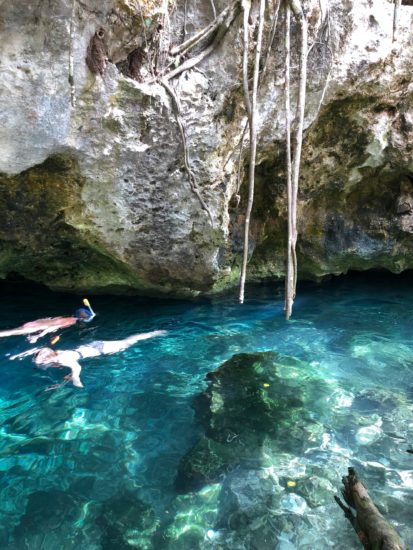
Snorkeling in the Gran Cenote – Photo: (c) 2018 – Yvonne of Hello Wander World
Cenotes
Although beaches are the main draw of Tulum, cenotes should also be a must on your to-do list. Cenotes are giant sinkholes that have opened up revealing crystal blue waters housed in caves. They also used to have a significant place in ancient Mayan sacrificial ceremonies. Now, they are locations for everyone to swim, snorkel, and float around in.
Cenotes are scattered all across the Yucatan Peninsula, with multiple being in the Tulum area. The most popular one is the Gran Cenote – about 10 minutes away from the town center. Entrance is $180 pesos (~$10 USD). You can rent snorkels for $80 pesos and life jackets for $30 pesos. Because the cenote is so popular, it gets crowded quickly, so try to get there right when it opens to get a little time to explore without other people paddling around you. There are changing rooms, outdoor showers, and lockers for rent as well.
Less popular, but still spectacular cenotes include: Cenote Dos Ojos (see one of the longest underwater cave systems, $100 pesos/~$8 USD for entrance), Cenote Calavera (popular with scuba divers), and Carwash (one of the larger cenotes in the area). If you only have time to visit one cenote, I suggest going to one of the less popular ones. You pay less for entrance and have more space to explore.
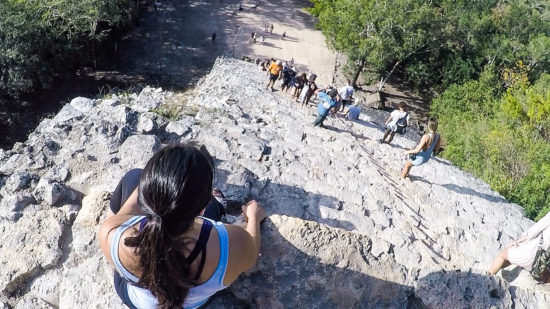
View from the top of the Coba Ruin – Photo: (c) 2018 – Yvonne of Hello Wander World
Ruins
The whole Yucatan Peninsula is home to well preserved ancient Mayan Ruins. Chichen Itza is about a 2 hour drive away, but if you’re unable to make that trip, there are good alternatives in the Tulum area.
The Tulum Ruins are a whole site of old temples situated overlooking the beach. There are trails that connect all the temples with plaques going into details about everything from architecture to what the building was used for. There are different tour options available as well as self walking tours. Entrance is $70 pesos and they are open from 8am – 5pm daily. These ruins are the most popular in the area, so it’s highly recommended you arrive early in the morning when they open. Expect to take at least an hour walking around and exploring. There is a way to get down to the beach too, so wear a swimsuit under your clothes (there are no changing rooms) to take a dip in the sea with the epic backdrop of the ruins behind you.
About a 40 minute drive from the town center are the Coba Ruins. There are tours that can take you there, as well as, an ADO bus route. We decided to drive, in order to save money and move at our own pace. The Coba Ruins are even more expansive than the Tulum Ruins and it’s home to the tallest point in the Yucatan Peninsula – a temple that you’re actually allowed to climb. You climb at your own risk – it is a steep climb up smooth steps with no railing, there is only a single rope running down the middle to grab. If you are careful though, the view at the top is priceless. You see trees as far as the eyes can see, along with a few temples popping up here and there. This temple is located in the back of the site, about a 20 minute walk or 10 minute bike ride. To get around the sites, you can walk, rent bikes ($35 pesos), or hire a bike cab. Entrance is $70 pesos and parking is $55 pesos.
There are cenotes in the Coba area as well to cool off after a hot bike ride and climb.
Nightlife
After a day of lounging on the beach or exploring Mayan Ruins, you have a plethora of nightlife destinations. The nightlife scene isn’t as crazy as Cancun, Tulum offers a more chill experience, focused on good company, good music, and a warm ambiance. Some standout beach clubs are: Papaya Playa Beach club with live DJs every Saturday and Gitano Restaurant with delicious cocktails and live DJs every Friday night.
If you’re staying in the town center, it can be a little difficult to get to beach clubs late at night, but no need to worry – the town has its own slice of nightlife. Calle Centauro Sur, is a block of open air bars and restaurants that offer live music and delicious drinks nightly. Batey’s Mojito Bar makes THE best mojitos in a variety of flavors using fresh sugarcane. They also fill the block with live music and performers.
Staying Connected + Currency Exchange
Something I was surprised about during our visit was the lack of WiFi offered in public spaces. A handful of the restaurants/cafes we visited didn’t offer WiFi, even for paying customers (the lack of WiFi may get better, as Tulum becomes more popular though). The good thing is, Mexico has data and calling coverage with most carriers now! Look into your wireless carrier (T-mobile, Verizon, AT&T, etc.) and see what the offers are – some of the carriers require you to have a certain plan.
Pesos are the local currency accepted. Some restaurants may accept USD, but the conversion rate won’t be in your favor, so stick with pesos when you can. Cash is the main way of paying, not many restaurants or stores accept credit cards (even if they do, they’ll most likely tack on a processing fee). Something that may be confusing at first, is the way they use $ to mean pesos, not the US dollar. Once you’re in town, all the posted costs with $ will be pesos, unless otherwise noted. You can also always ask, if you’re not sure.
Once you’re in Tulum, HSBC is a good bank to use to get pesos – they charge a smaller international fee than other ATMs. As usual with traveling to places outside the US, it’s best to have an international ATM card and credit card to avoid extra fees from your bank/credit card company. Before you leave, it’s a good idea to check what international fees you might be charged and let your bank/credit card know you’ll be traveling.
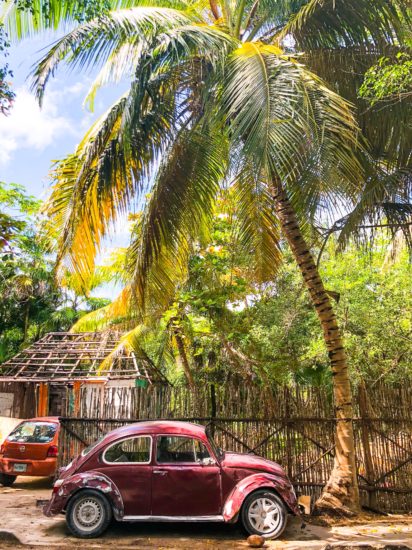
Boho chic style along the side of the road – Photo: (c) 2018 – Yvonne of Hello Wander World
Best time to visit
The only time you may want to avoid visiting the Yucatan Peninsula, would be the months of June – October during the hurricane season. Due to the potential bad weather, hotels that are still open offer unbelievable great deals on their rooms. It’s a trade-off that might be worth it for some people.
The best time to visit is from the late October – December timeframe, as the weather is warm and dry and there are fewer tourists. The high season (between January and March) are also a great time visit, as the weather is good and everything is open, but there will be loads of visitors as well as tour buses continuously bringing people to the popular sites.
Safety
There have been recent State Department alerts on certain parts of Mexico, but Tulum remains a relatively safe destination. To ensure a safe trip, avoid walking in unlit areas during the night – both in town and on the beach side. If you’re driving, try to avoid driving at night, follow posted signs, and make sure you don’t leave any valuables in the car. We never felt unsafe during our visit, even when we stayed in an open treehouse in the jungle!
To stay safe from illness, do not drink the tap water. Always purchase bottled water. You can find bottled water in the many convenience stores scattered around.
During your stay, it’s helpful to know a few words in Spanish in order to get around and be polite.
Hello: hola
Good Day: buenas
How much: cuantas
Thank you: gracias
Beach: la playa
About The Author:
=====
To make sure you receive our latest deals, LIKE our The Flight Deal Facebook Page, follow us on Twitter @TheFlightDeal, Threads @TheFlightDeal or The Flight Deal WhatsApp channel or subscribe to The Flight Deal RSS Feed or Subscribe via Email (Once a Day)
The Flight Deal does not sell travel products or services. We provide you with information about third-party travel suppliers’ offers, and link you to their sites. The information posted by The Flight Deal is valid at the time of publication. However, we have no control over the suppliers, and we therefore do not warrant or guarantee that their offers will not change or become unavailable. Nor are we responsible for their products, services or site content. Please see their sites for their most up-to-date offer information and all applicable terms and conditions.
Sign up to receive The Flight Deal Daily DealsLetter, to stay up to date with the latest and greatest flight deals available.

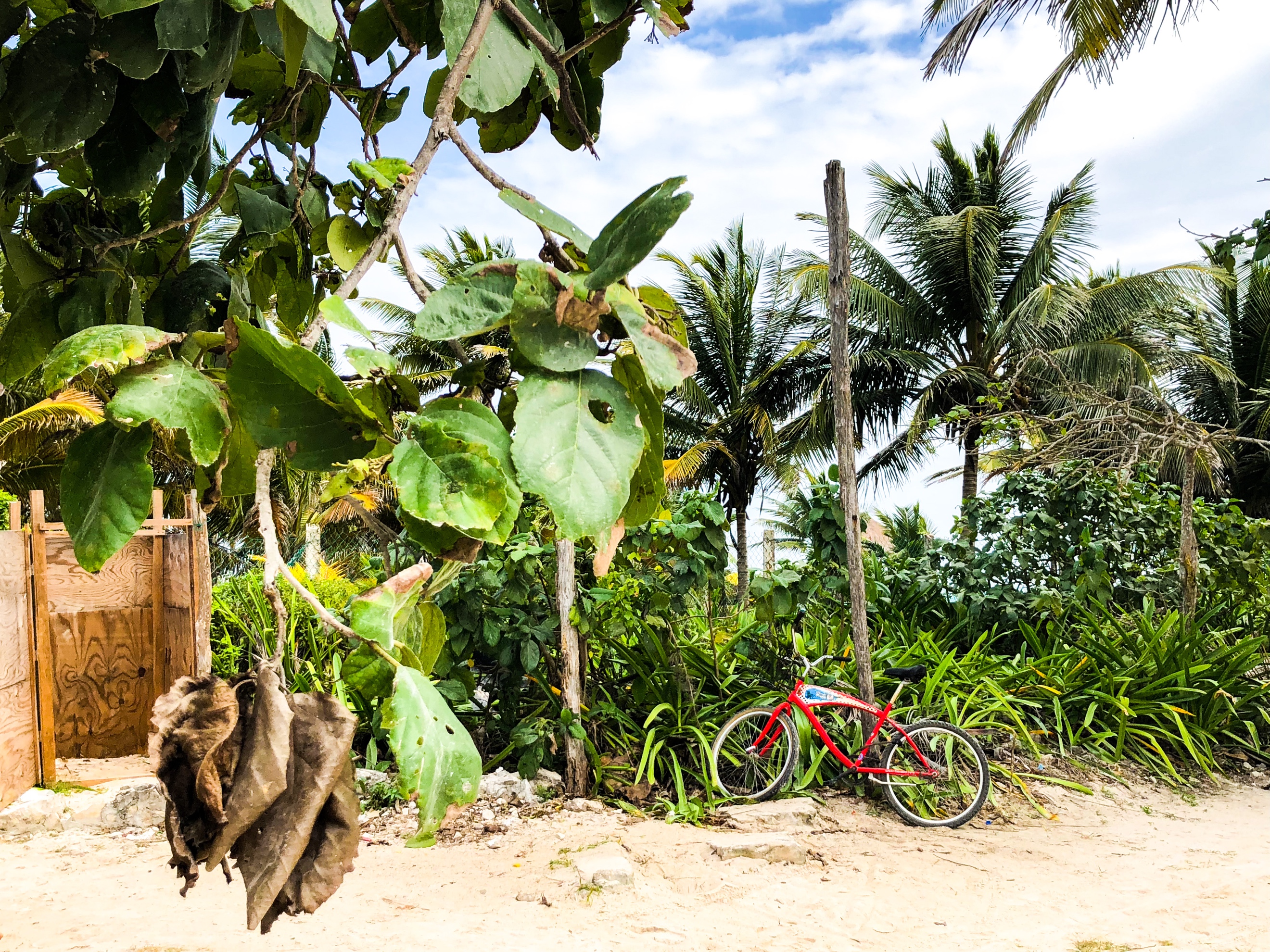
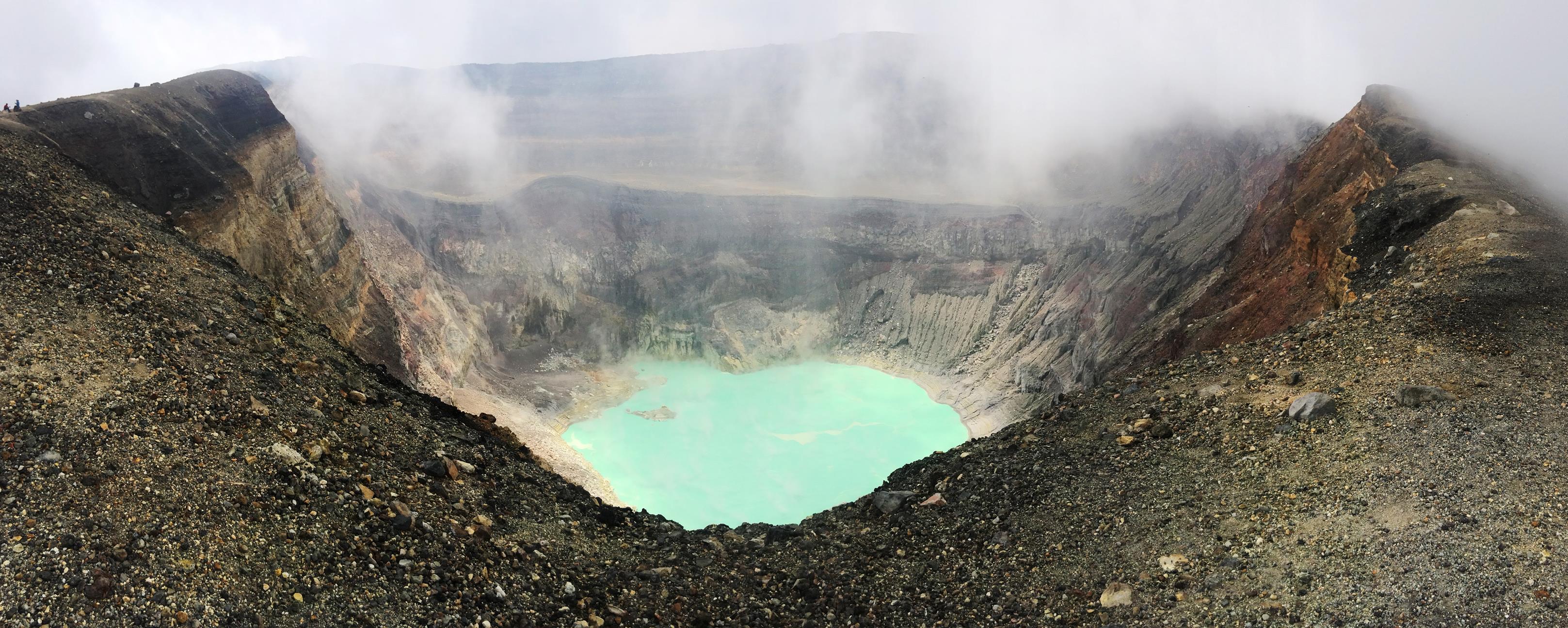
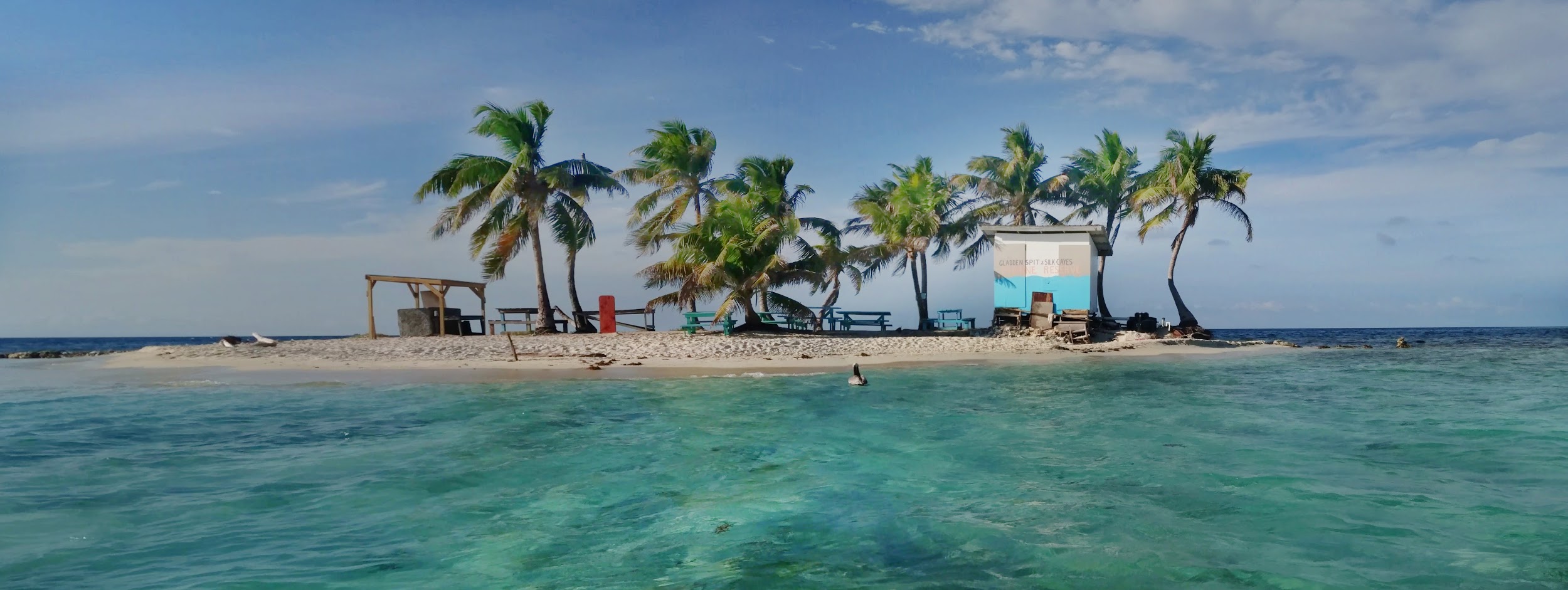
No Comments